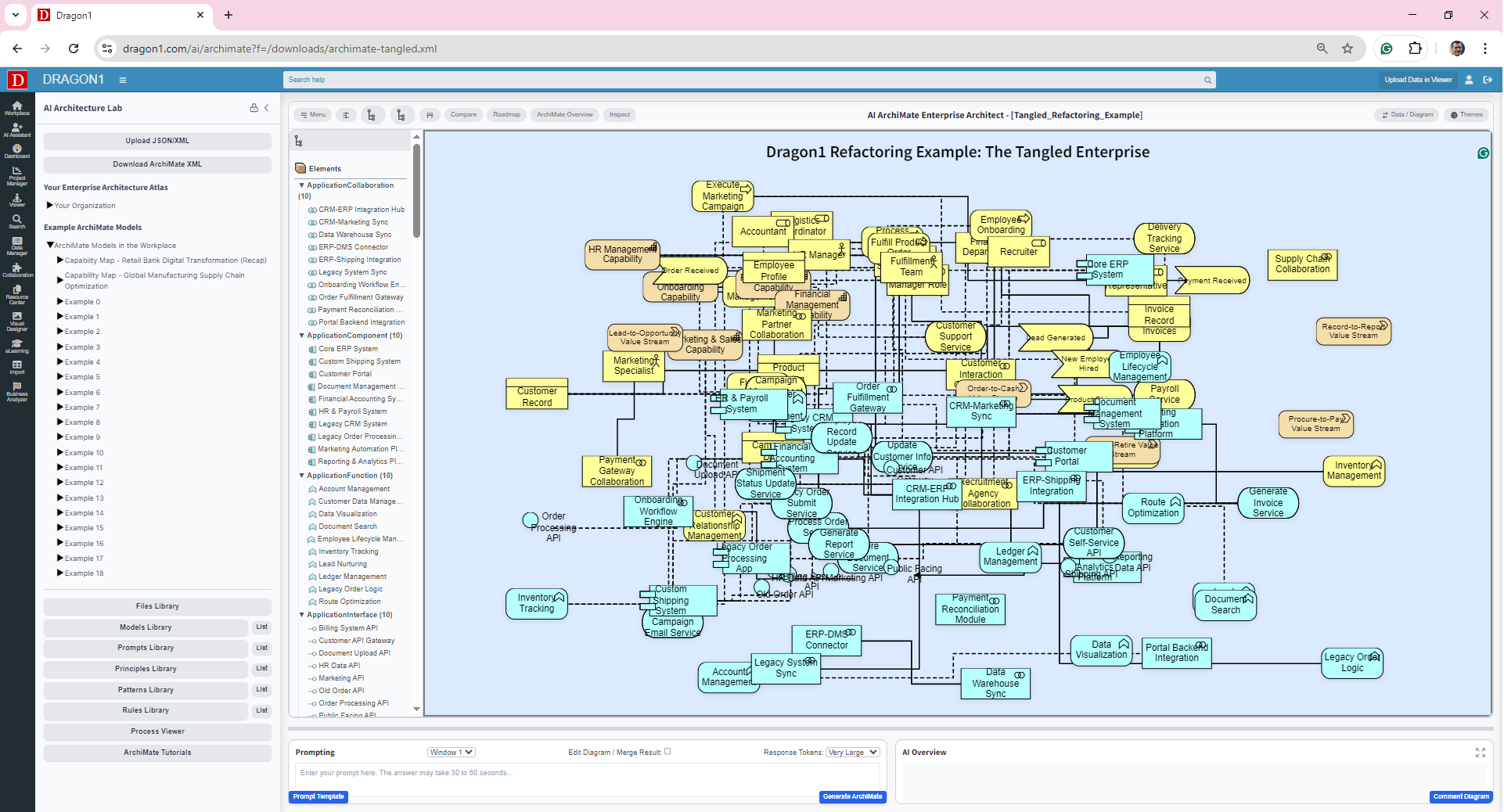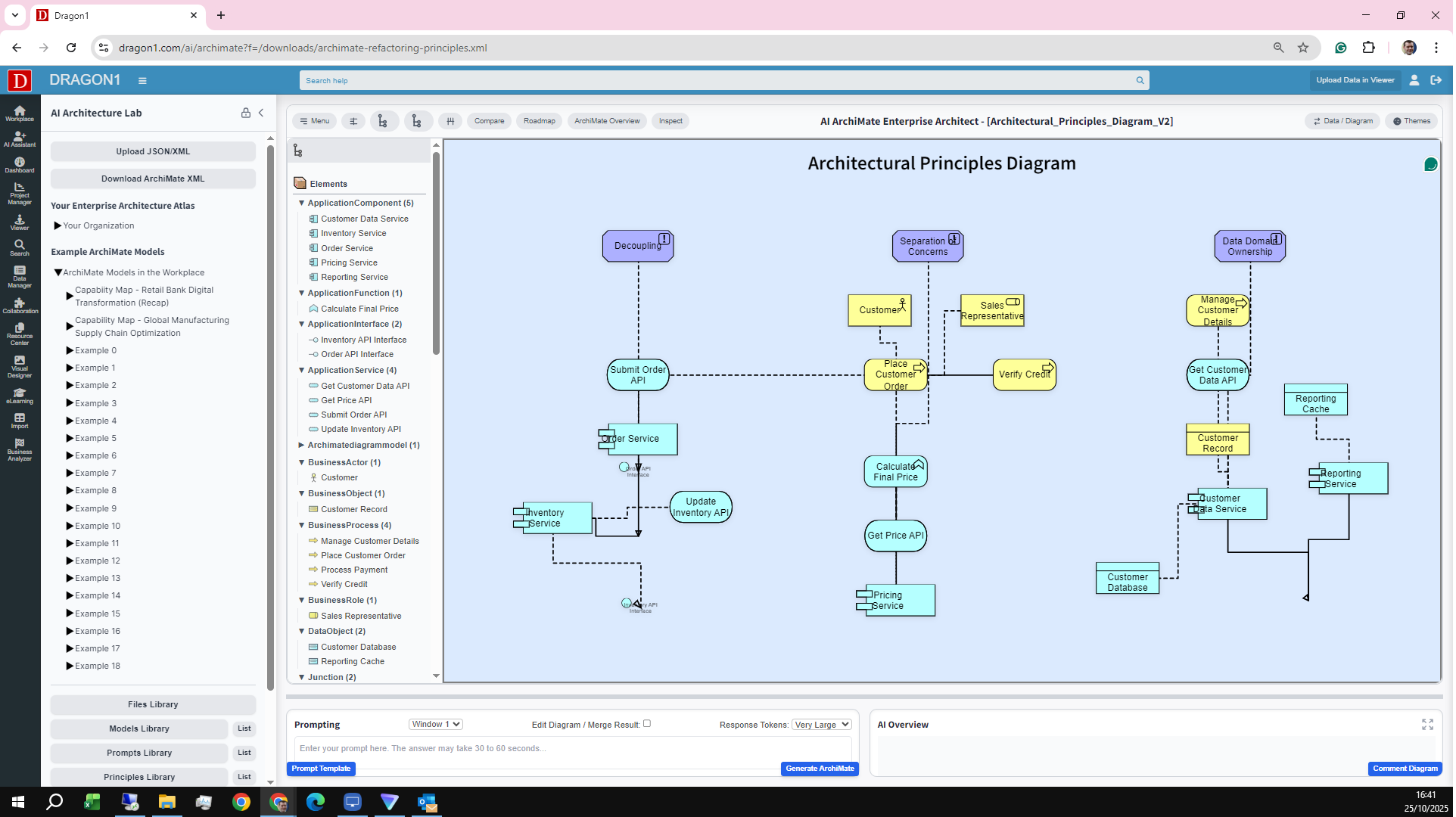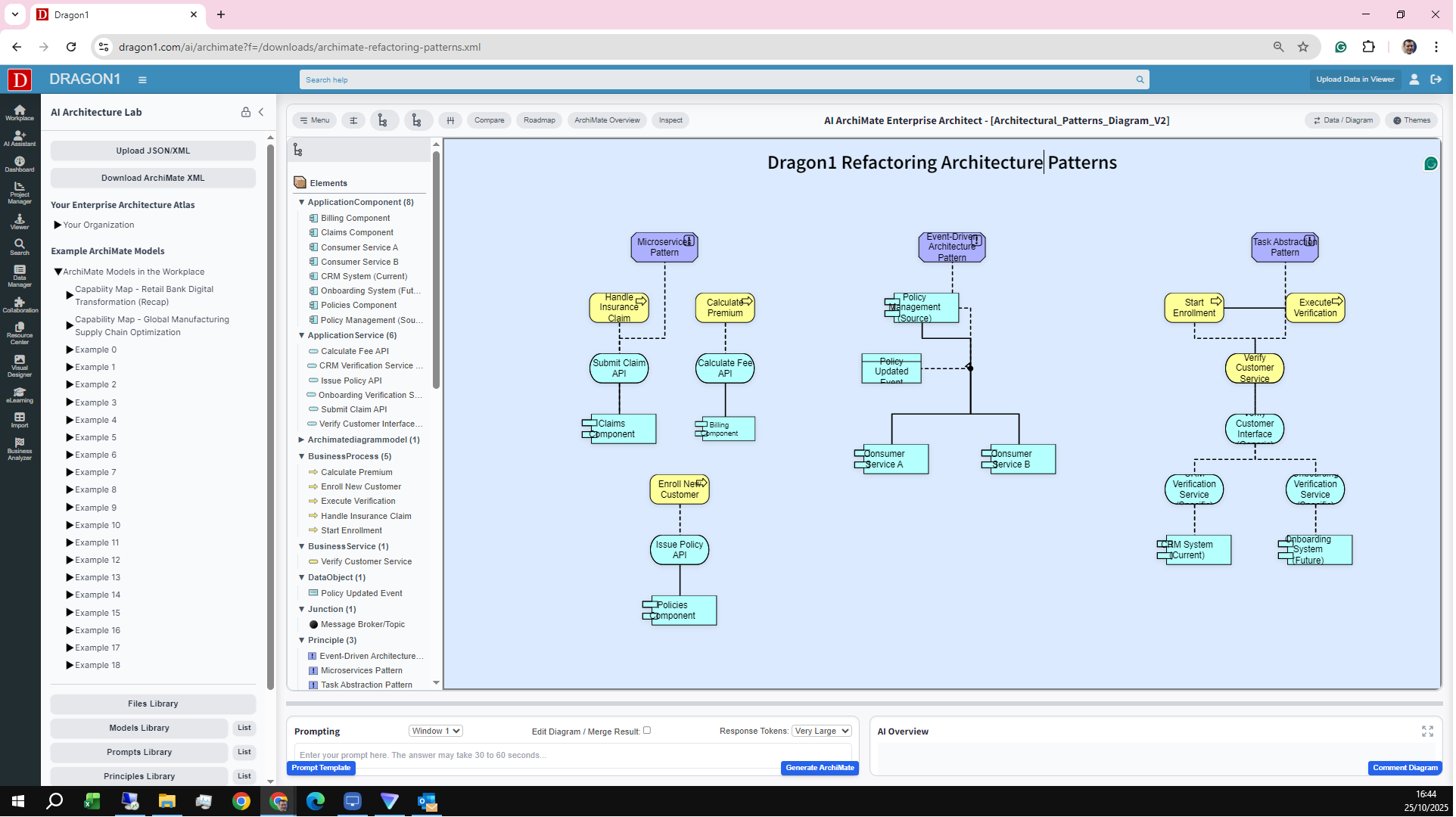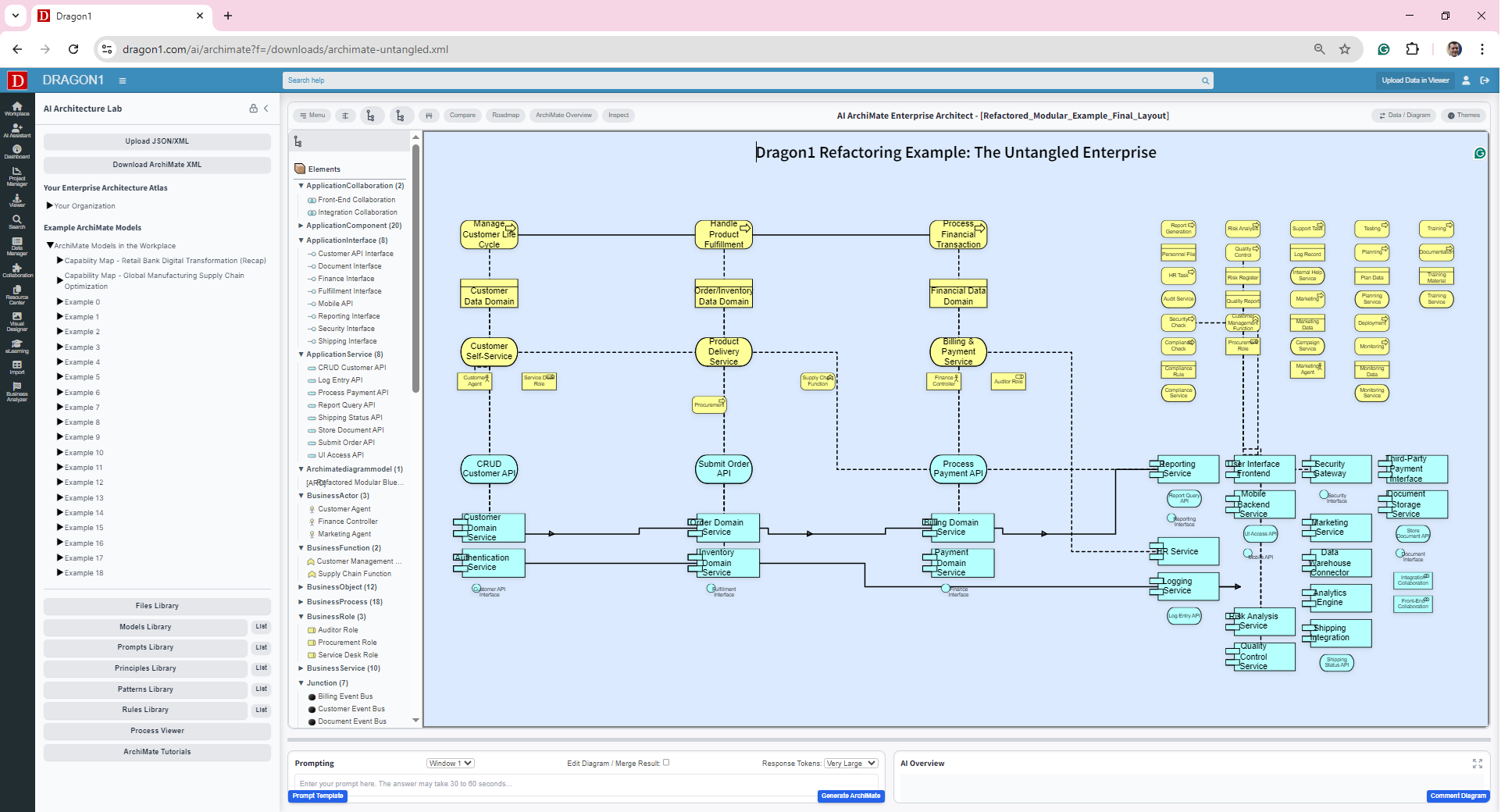Refactoring
Refactoring Architecture and Processes with Dragon1:
Rethinking the Enterprise's Business and IT Solutions
Refactoring is an essential activity for maintaining the long-term health and agility of any enterprise. Using Dragon1 as your Enterprise Transformation & Architecture (ETA) platform enables you to rethink, redesign, and revisualize current complexity and engineer clean, future-proof designs grounded in sound architecture principles.
Dragon1 Definition of Refactoring
Refactoring, in the context of Dragon1, is the rethinking and the redesign of processes and systems using rules, principles, and patterns, but strictly without adding new functionality or features. The goal is architectural optimization: mitigating complexity, increasing replacability, stability, maintainability, resilience, and agility without changing or adding features or capabilities.
The Refactoring Journey: From Tangled to Tidy
The transformation from a complex, tightly-coupled architecture to a modular, agile one is driven by a clear architectural vision, as visualized below:
Current State (Tangled) → Target State (Untangled, below)

Conceptual diagram showing the need to shift from hyper-interconnected, high-risk systems to a clean, modular, and replaceable architecture.
The Current State: The Complexity Trap
Many organizations find themselves trapped in an architecture where systems have evolved organically, resulting in what is often called the 'Big Ball of Mud.'
The Problem: Hyper-Interconnectedness
Consider a scenario where every major application is connected to every other application through a multitude of point-to-point interfaces. Tasks within critical processes rely on hard-coded dependencies across multiple systems, and core applications share a single, massive database.
The Result: The system is so complexly interconnected that it is impossible to replace a single part of a system or a complete system without causing unpredictable failures across the entire landscape. Upgrading technology, addressing security flaws, or responding to business changes can become prohibitively expensive and risky.
The Dragon1 Approach: Principles and Patterns
Dragon1 provides the framework to define and apply the architecture rules necessary to break down this complexity. By visualizing the dependencies, architects can enforce specific principles and introduce patterns to guide the redesign toward a clean, modular structure.
Three Major Refactoring Principles
 Diagram representing the three major refactoring principles in action.
Diagram representing the three major refactoring principles in action. - 1. Principle of Decoupling: Components must interact via standardized interfaces (APIs) and must not rely on the internal implementation or data storage of another component.
- 2. Principle of Seperation of Concerns: Every process step, application module, and application should have one, and only one, reason to change.
- 3. Principle of Data Domain Ownership: Data is owned and maintained by only one system. Other systems can access data via service interfaces but cannot write directly to the source system's database.
Three Core Refactoring Patterns
 Diagram illustrating the three core refactoring patterns.
Diagram illustrating the three core refactoring patterns. - 1. Application Pattern: Microservices (or Modular Monolith): Break large, monolithic applications into small, independent services based on business capabilities, enforcing the Single Responsibility Principle.
- 2. Integration Pattern: Event-Driven Architecture (EDA): Replace direct, synchronous calls with asynchronous events flowing through a message broker. This forces decoupling and dramatically reduces direct system dependencies.
- 3. Process Pattern: Task Abstraction: Separate the logical task (e.g., 'Verify Customer') from the system performing it (e.g., 'CRM System'). The process only interacts with a generic service, making the underlying system easily swappable.
The Future State: The Optimized Landscape
Current State (Tangled, above) → Target State (Untangled)

Conceptual diagram showing the result of refactoring: the shift from hyper-interconnected, high-risk systems to a clean, modular, and replaceable architecture.
Refactoring Architecture and Processes
By applying these principles and patterns, the Dragon1 blueprint transforms the existing complex web into a clean, layered, and modular architecture.
Achieving Agility
The resulting process and application architecture is no longer complex and interconnected, but clean and manageable. The rigid, tightly bound connections are replaced with clear, standardized contracts.
The Outcome: Replaceability
Because of the enforced architecture principles, it is now entirely possible to:
- Replace Applications in Systems: A legacy application can be rebuilt or swapped out without impacting a dozen dependent applications, as they all communicate via a standardized API or event stream.
- Replace Modules in Applications: Internal modules can be updated or replaced (e.g., moving a service to a new microservice) because their data access and responsibilities are isolated.
- Replace Tasks in Processes: The technology supporting a process task can be upgraded (e.g., replacing an RPA bot with an AI service) without redesigning the entire end-to-end business process.
Ready to start your Refactoring journey? Use Dragon1 to define your principles, map your current complexity, and engineer your future, agile enterprise architecture. You can reuse and customize the visualizations on this Refactoring page for your own situation after purchasing a Dragon1 Business license.